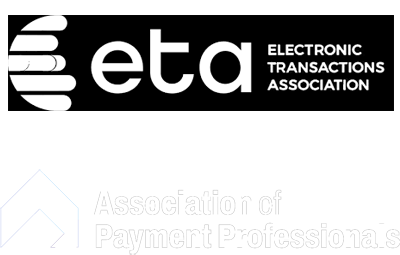21 Aug

Credit card processing is a crucial part of doing business in today’s digital age. Understanding the various pricing structures available can help businesses make informed decisions about how they handle credit card transactions and optimize their financial performance. In this article, we will explore the basics of credit card processing, the importance of pricing structures, the different types of pricing structures, and the pros and cons of each.
Understanding Credit Card Processing
Before we dive into the different pricing structures, it is essential to have a basic understanding of how credit card processing works. When a customer makes a purchase using a credit card, the payment information is sent to a credit card processor, which then communicates with the customer’s bank to verify the transaction and transfer the funds. The credit card processor plays a vital role in facilitating the transaction, ensuring security, and transferring funds between the parties involved.
The Basics of Credit Card Processing:
- Authorization: The credit card processor sends the transaction details to the customer’s bank to verify the availability of funds and approve or decline the purchase.
- Capture: Once the transaction is authorized, the funds are captured by the credit card processor and transferred from the customer’s account to the merchant’s account.
- Settlement: At the end of the day, the credit card processor settles the transactions by transferring the funds to the merchant’s bank account.
The Role of Credit Card Processors:
Credit card processors act as intermediaries between the customer, the merchant, and the bank. They handle the technical aspects of the transaction, such as securely transmitting payment data, encrypting sensitive information, and ensuring compliance with industry standards and regulations.
Aside from the technical aspects, credit card processors also provide additional services to merchants. One such service is fraud detection and prevention. With the rise of online transactions, the risk of fraudulent activities has also increased. Credit card processors employ advanced algorithms and machine learning techniques to analyze transaction patterns and identify potential fraudulent activities. By flagging suspicious transactions, they help protect both the merchant and the customer from financial losses.
Another important role of credit card processors is customer support. They provide assistance to merchants in case of any issues or disputes related to transactions. Whether it’s a chargeback dispute or a technical glitch, credit card processors have dedicated support teams that help resolve these issues promptly and ensure a smooth payment experience for both the merchant and the customer.
Credit card processors also play a crucial role in ensuring compliance with industry regulations and standards. They are responsible for implementing security measures to protect sensitive customer data and maintaining PCI DSS (Payment Card Industry Data Security Standard) compliance. This involves regular security audits, encryption of data, and strict access controls to prevent unauthorized access to payment information.
Furthermore, credit card processors offer reporting and analytics tools to merchants. These tools provide valuable insights into sales trends, customer behavior, and transaction data. Merchants can leverage this information to make informed business decisions, optimize their sales strategies, and identify areas for improvement.
In conclusion, credit card processors are integral to the functioning of the modern payment ecosystem. They handle the technical complexities of credit card transactions, provide additional services such as fraud detection and customer support, ensure compliance with industry standards, and offer valuable reporting and analytics tools. By understanding the role of credit card processors, merchants can make informed decisions when choosing a processor that best suits their business needs.
The Importance of Pricing Structures in Credit Card Processing
Choosing the right pricing structure for credit card processing can have a significant impact on a business’s profitability and the overall experience for both the business and the customer.
When it comes to credit card processing, businesses have several pricing structures to choose from. These structures determine how much a business pays in processing fees for each transaction. The decision on which pricing structure to adopt is crucial, as it can directly affect a business’s financial performance.
How Pricing Structures Impact Businesses
The pricing structure used can determine how much a business pays in processing fees for each transaction. Depending on the nature of the business, the volume of transactions, and the average transaction size, the pricing structure can have a substantial impact on a business’s financial performance. A business with high transaction volumes may prefer a pricing structure that offers lower per-transaction fees, while a business with higher average transaction sizes may prioritize a structure that has lower percentage-based fees.
For example, let’s consider a small retail business that processes a high volume of small transactions. In this case, a pricing structure that charges a low flat fee per transaction would be more favorable, as it would minimize the impact of fees on the business’s profit margins. On the other hand, a business that deals with larger transactions, such as a luxury goods retailer, may opt for a pricing structure with lower percentage-based fees to ensure that the fees do not eat into their profits significantly.
Furthermore, the pricing structure can also affect a business’s ability to accurately forecast and manage its cash flow. Some pricing structures may have more predictable costs, allowing businesses to budget and plan accordingly. Others may have fluctuating fees based on transaction volume or other factors, making it more challenging for businesses to anticipate their monthly expenses accurately.
The Effect on Consumer Experience
The pricing structure for credit card processing can also impact the overall customer experience. A structure that results in higher processing fees for the merchant may indirectly lead to higher prices for the consumer, as the business seeks to offset the cost. This can have consequences on customer loyalty and satisfaction.
Imagine a scenario where a business has opted for a pricing structure with high per-transaction fees. To cover these fees, the business may need to increase its prices, making its products or services less affordable for consumers. This could potentially drive customers away, as they may seek more affordable alternatives elsewhere.
On the other hand, a business that adopts a pricing structure with lower fees may be able to offer more competitive prices to its customers. This can enhance the customer experience, as consumers perceive the business as providing value for money. Additionally, a transparent pricing structure can help build trust between the business and its customers. When customers understand the fees associated with credit card processing, they are more likely to feel confident that they are being treated fairly and not being taken advantage of.
It is worth noting that the impact of pricing structures on the customer experience goes beyond just the cost of the product or service. It also affects the perception of the business’s integrity and fairness. Customers appreciate transparency and honesty, and a clear and understandable pricing structure can contribute to a positive overall experience.
In conclusion, choosing the right pricing structure for credit card processing is crucial for businesses. It can directly impact a business’s profitability and financial performance, as well as the overall experience for both the business and the customer. By carefully considering the nature of their business, transaction volumes, and average transaction sizes, businesses can select a pricing structure that aligns with their goals and enhances their relationships with customers.
Types of Credit Card Processing Pricing Structures
Credit card processing pricing structures come in various forms, each with its own advantages and considerations. Understanding the different options can help businesses make informed decisions that align with their specific needs and goals. Using a service like www.Payblox.com will simplify finding the right solution because they bring processors to you.
Flat Rate Pricing
Flat rate pricing is a straightforward and transparent pricing structure where businesses pay a fixed percentage or fee for all transactions. This structure offers simplicity and predictability, making it popular among small businesses and individuals.
Imagine a local coffee shop that processes a moderate number of transactions each day. With flat rate pricing, they know exactly what percentage or fee they will be charged for every transaction, simplifying their financial planning.
However, it’s important to note that flat rate pricing may not be the most cost-effective choice for businesses with high transaction volumes or larger average ticket sizes. For these businesses, the flat rate may result in higher fees compared to other pricing structures.
Interchange-Plus Pricing
Interchange-plus pricing is a more sophisticated and detailed pricing structure. Businesses using this structure pay the interchange fee set by the card networks (Visa, Mastercard, etc.) plus a markup fee set by the credit card processor.
This structure provides greater transparency, allowing businesses to see the separate components of the fees they pay. For example, a retail store with a high volume of transactions can analyze the interchange fees and markup fees separately to understand the breakdown of their costs.
Interchange-plus pricing can be a preferred choice for businesses with high transaction volumes and larger average ticket sizes. By having visibility into the different components of fees, businesses can potentially negotiate lower rates and ultimately lower their overall fees compared to other pricing structures.
Tiered Pricing
Tiered pricing is a structure where transactions are categorized into different tiers or rate levels based on criteria set by the credit card processor. Each tier has its corresponding fee structure, usually consisting of qualified, mid-qualified, and non-qualified rates.
Consider a clothing boutique that processes a mix of regular transactions and transactions involving rewards or corporate cards. With tiered pricing, the credit card processor may classify regular transactions as qualified rates, while transactions with rewards or corporate cards may fall under mid-qualified or non-qualified rates.
While tiered pricing offers simplicity and ease of use, businesses should be aware of the potential lack of transparency and the potential for higher fees. The classification of transactions into tiers may not always align with a business’s expectations, leading to unexpected costs.
Pros and Cons of Each Pricing Structure
Evaluating Flat Rate Pricing
Pros:
- Simplicity and ease of use
- Predictability and transparency
Cons:
- Potentially higher fees for businesses with high transaction volumes or larger average ticket sizes
Assessing Interchange-Plus Pricing
Pros:
- Greater transparency and visibility into fees
- Potential for lower overall fees, especially for businesses with high transaction volumes or larger average ticket sizes
Cons:
- More complexity and potential confusion in understanding the fee structure
Analyzing Tiered Pricing
Pros:
- Simplicity and ease of use
Cons:
- Lack of transparency and difficulty in understanding the fee structure
- Potential for higher fees compared to other structures
In conclusion, understanding the different pricing structures available for credit card processing is essential for businesses to optimize their financial performance and provide a positive customer experience. Each structure has its pros and cons, and businesses should carefully evaluate their needs, transaction volumes, and average ticket sizes to determine the most suitable pricing structure. By making an informed decision, businesses can minimize costs, increase transparency, and ultimately enhance their overall financial efficiency.






